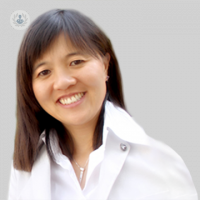Orthognathic surgery – the jaw correction procedure
Written by:If you have a lower jaw that is too long or too short, it results in the upper teeth sticking out a long way, or the lower teeth in front of the upper teeth as an underbite. The jaw may grow longer on one side than the other and this can cause facial asymmetry. If you notice any of these things then you should really seek help with a specialist who is used to working with these jaw discrepancies.
Thankfully, expert orthodontist Dr Moira Wong is here to explain everything you need to know about orthognathic surgery to correct the jaw, which normalises the face to give patients a new feeling of confidence.

When do signs of misalignment of jaws and teeth start to show?
As it is something that changes over time, a lot of parents notice facial asymmetry or an underbite in their children and it is good for them to be seen early to monitor growth and development. We normally try to enhance jaw growth if patients are young. If they are not growing or growing too much, then it is good to get records at key stages. This information helps to fine-tune the timing of surgery. It is different in different people and of course different in girls and boys.
How do the orthodontist and oral and maxillofacial surgeon work together?
We work together as a team. The orthodontist needs to put the teeth in a position so that when the jaws are corrected surgically, everything fits together. The stability of the surgery is determined by the teeth fitting together and holding the new jaw position. The team do work together over an 18-month to two year period. The teeth are moved orthodontically over the first nine-month to 12 months. Then the surgery takes place, and then the braces are used to fine-tune the tooth position for a further 6-12 months after the surgery.
How is the orthognathic surgery performed?
Orthognathic surgery is performed with the patient asleep. It usually involves a one night stay in the hospital for single jaw surgery and two nights for double jaw surgery. Normally, with our patients, we have a high success rate with little swelling due to the expertise of the surgeon that I work with you. Some patients are back to work after two weeks. The surgeon in my clinic is very experienced and we have been working as a team since 1998.
What risks are involved in jaw correction?
There is the normal risk of surgery as with any procedure but these are minimised when working with a very experienced surgeon.
What is the recovery period like after orthognathic surgery and what aftercare is involved?
From the beginning, the appointments are usually once every five weeks. When the patient has had the surgery we normally see them every week for about four weeks to monitor the healing and to influence healing and the final position of the teeth and jaws. The patient is on a soft diet for a week, eating foods such as pasta and omelette, and then, gradually, they are back to eating normally within two to three weeks.
How much does the procedure cost?
Altogether with the orthodontist and surgery, you’re looking at about £20-25,000. For patients, it is a life-changing procedure that normalises their face. My personal experience of walking this journey with orthognathic patients is that they go out into the world braver. Their appearance no longer inhibits what they do with themselves.
What advice would you give to someone considering corrective jaw surgery?
Typically, patients I meet have been thinking about this procedure for about five years and I know that in the health service there may be waiting lists. I have met some patients who have waited for up to eight years.
In the private sector, you have a well-established team and it is a smooth and slick operation where you are not waiting for surgical planning time. It is an 18-month project that changes your life and can be done as and when you want.
Lots of people do it during university before they start working professionally. Some people do it afterwards. I have some patients in their fifties who have put up with a bad bite all of their lives and have been advised that their current jaw position may contribute to early loss of their teeth. They have the procedure to improve the bite and to preserve their teeth. Older patients of mine have made speedy recoveries and can’t believe their changes. The goal in results remains the same for all patients: a massive improvement in facial appearance.
Do not hesitate to book an appointment with Dr Wong if you would like to discuss your corrective surgery options.


